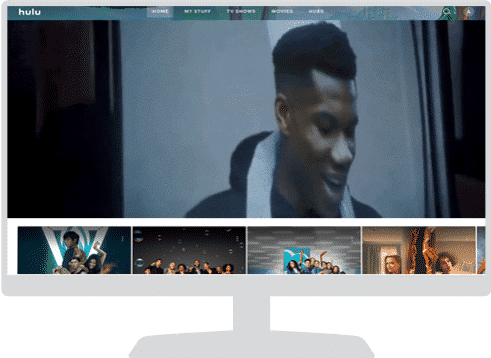Not too long ago, digital video was a nice-to-have and most of our video viewing happened via traditional, linear TV. Now, digital video is part of our daily lives. We’re watching video content for many hours a week on our phones, our laptops and tablets, and our smart TVs and streaming devices—and this has caught the attention of marketers across the world.
The average video consumption per week increased 85% from 2016 to 2020, according to Limelight’s State of Online Video 2020 report. Consumers watched nearly eight hours of online video per week in 2020.1
This upward trend has driven marketers to invest more in building video ad campaigns to reach consumers where they’re spending more of their time.
At Criteo, we surveyed more than 1,000 senior marketing executives around the world—including those in the US, UK, France, Germany, Italy, Spain, Australia, Japan, South Korea, and India—and half confirmed that more than 20% of their digital marketing budget was spent on paid video in 2020. More than a third (34%) said their paid video budget is likely to increase in 2021.2
What is OLV advertising?
OLV, or online video, advertising is a broad term which refers to video advertising which appears on websites and apps. These video ads can appear before (pre-roll), during (mid-roll), or after (post-roll) online video content.
As consumers experience digital fatigue and their attention spans become even shorter, video ads can capture their attention across every channel and device they use and drive them through the path to purchase. From delivering captivating messaging to targeted audiences to retargeting previous shoppers with enticing call-to-action reminders, OLV advertising is a powerful creative tool to promote products, services, or brands.
In this guide, we have five rules to follow to build the most effective OLV advertising strategy as well as video ad examples for every stage of the customer journey.
How to make effective advertising video campaigns: 5 rules to consider
At a time when marketers are under more pressure to prove ROI and deliver business results like sales and revenue, building the most effective ad campaigns has never been more important. The same applies to online video advertising. It’s possible to drive these business outcomes if video campaigns are executed and measured correctly. Follow these five rules to build a powerful OLV advertising strategy that meets your business goals.
Rule #1: Create a Commerce Media Strategy
Commerce media is an approach to digital advertising that combines commerce data and intelligence to target consumers throughout their shopping journey and help marketers and media owners drive commerce outcomes (sales, revenue, leads).
To build a commerce media strategy for video, marketers and agencies must launch video ad campaigns that drive new customers from discovery to their first purchase…
- Awareness
- Consideration
- Conversion
…as well as campaigns that drive existing customers to discover more products or services and become repeat buyers and loyal customers…
- Consideration
- Conversion
- Loyalty
All of these campaigns should ideally be running at the same time through the same technology partner to drive audiences from one stage of the customer journey to the next. This also gives marketers the ability to track audiences from their initial video exposure to click and conversion.
As the customer journey becomes increasingly digital and the lines blur between shopping and other digital activities such as social media, the time between brand discovery and conversion is shrinking. Marketers with active digital video strategies for every stage of the purchase funnel are more likely to make a lasting impression on consumers across touchpoints and influence those rapid purchase decisions.
Rule #2: Build Audiences First
Before thinking about channels, devices, or ad formats, the first step to building video campaigns is to pick the right audience for each objective.
Each campaign will engage a different audience and have its own set of KPIs depending on which part of the customer journey is being targeted. For example, for awareness campaigns, it’s all about reaching a large number of customers, but it’s still important to narrow down your audience to the people who are most likely to buy your products or services using the data available to you.
Click here to see our list of the right audiences, creative, and KPIs for each campaign objective, including awareness, consideration, conversion, and loyalty.
Look for an advertising partner that can help you apply your first-party data to build audiences, as well as enhance your data with additional commerce data showing behavior and purchase intent to get a 360-degree view of consumers.
Rule #3: Be Channel, Device & Format Agnostic
Once you build a campaign audience, the channels, OLV platforms, devices, and ad formats for that campaign are all dependent on where that audience spends their time and where they’re most likely to view or engage with your ads.
Consumers all have different video viewing behaviors, and you must be able to reach them no matter where, when, or how they view video content.
Rather than focus on specific channels (like connected TV (CTV)) or specific ad formats (like in-stream and outstream), focus on finding a video advertising solution that gives you access to a wide range of inventory sources through direct relationships with premium publishers and video streaming services, as well as all in-stream, outstream, and interstitial ad formats.
Rule #4: Scale Video Creative
The cost of producing video creative is one reason why marketers hesitate to launch ad campaigns with OLV media. But with a commerce media strategy and the right advertising partner, marketers can use one video to build ads for the full customer journey.
At the beginning of the path to purchase, your video advertising solution should only need one 30-second video creative and a 15-second version for brand awareness ads across streaming devices, over-the-top (OTT) services, desktop, mobile web, and in-app.
Beyond awareness, make sure your video advertising partner has creative formats that combine clips of your video with display ad elements to drive lower-funnel objectives like consideration, conversion, and repeat purchases.
Rule #5: Measure Online Video Campaigns Holistically
Though each campaign will have its own set of KPIs, it’s important to track how every campaign pushed customers down the purchase funnel and influenced business results like sales, revenue, and ROI.
The reporting you get through your advertising partner should show the flow of your campaign audiences from the first video view to the point of sale. This allows you to connect your digital video advertising spend directly to sales.
For example, say a new customer watches your video ad during a show they’re streaming via an OTT device. If that customer becomes part of your audience for a consideration campaign and then makes a purchase through a conversion ad, you can show that your OTT campaign had an impact on that sale.
Video Ad Examples Across the Customer Journey
See examples of what your ads can look like as you engage consumers throughout their journey with your brand.
Awareness

CTV and OTT ads (find out the difference here) are typically full-screen, non-skippable, in-stream video ads that show your 30- or 15-second branding commercial. These ads have high viewability rates because they often appear before (pre-roll) or in the middle (mid-roll) of a show a consumer wants to watch.
Online video ads outside of CTV and OTT environments include in-stream (within content such as YouTube videos) and outstream (outside of video players) on the web, mobile web, and mobile apps. Though these ads tend to be skippable, the formats are highly engaging and can highlight a branding campaign, popular products, or certain product categories.
Consideration
Video in display ads for driving consideration objectives combine video and products to help consumers get to know your brand better. These rich media ads can include interactive features like scroll, search and email signup.
Consideration ad formats should drive interest from people who were exposed to your awareness video ads and provide a cohesive message for new customers. These ads can also drive existing customers to explore a wider range of your products or services.
Conversion
Video in display ads for conversion feature video assets in dynamic product recommendation ads to drive customer acquisition and sales while maximizing the reach of video content. These ads are delivered to new and existing customers who recently browsed your website.
OLV ads are one of the solutions that marketers must invest in this year to be ready for the future of advertising. Is your video advertising strategy ready?
1Limelight’s State of Online Video 2020, Global, n=5,000; responses from consumers who watch one hour or more of online video content each week.
2Criteo COVID-19 Impact on Marketing Survey, Global, October 2020, n=1,039
























